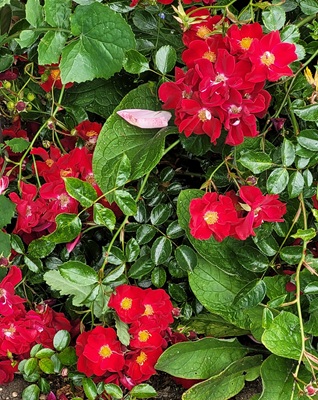Flower Properties
| Property | Value |
|---|---|
| English Name | Alpine Rose |
| MainColor | Red |
| PlantType | |
| Growth Type | |
| Season | June |
| ImageUrl | Rosa-005 |
| Photographer | DP |
| Location | |
| Human Toxicity | Non_Toxic |
Flower Details
Description
A wild rose with slender stems, pink to magenta flowers, and distinctive bottle-shaped hips. It grows naturally in mountain meadows and is one of the few wild roses that thrive at higher altitudes.
Distribution
Native to central and southern European mountains, especially the Alps and Carpathians. Sometimes cultivated in UK gardens as an ornamental wild rose.
Medicinal/Other Uses

Like other wild roses, the hips are rich in vitamin C and traditionally used in teas, syrups, and jams to support immunity and treat colds
Edibility

The hips are edible and can be made into syrups, jams, or teas (seeds should be removed as they are irritating if ingested). Petals are also edible and sometimes used in desserts.
Human Toxicity
Generally safe, though care is needed to remove fine hairs around the seeds, which can irritate the mouth and throat.
Pet Toxicity
Not Toxic
Active Compounds
Rich in vitamin C, carotenoids, flavonoids, and tannins with antioxidant and anti-inflammatory properties.
